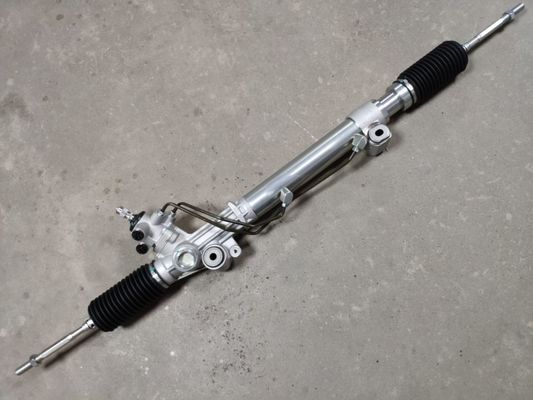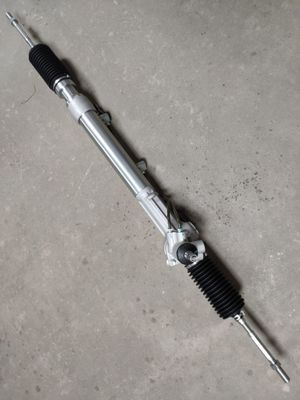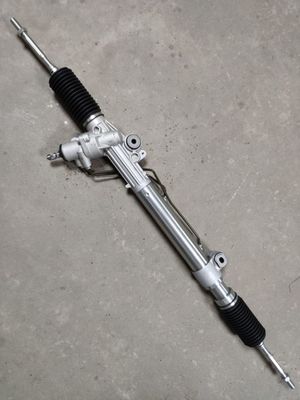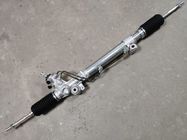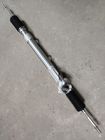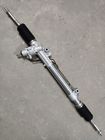Tous les produits
-
Support de direction de Toyota
-
Nissan Steering Rack
-
Support de direction de Mitsubishi
-
Support de direction de Hyundai
-
Support de direction de Honda
-
Support de direction de Mazda
-
Support de direction de VW
-
Support de direction de RHD
-
pompe de direction de toyota
-
pompe de direction de nissans
-
Pompe de direction de Mazda
-
Pompe de direction de Hyundai
-
Pompe de direction de VW
-
Pompe de direction de Mitsubishi
-
Pompe de direction de Honda
-
Pompe ou support de direction assistée
-
 Jeanpool ArrateaMedina, Pérourecomendable je llegó bien le producto d'EL
Jeanpool ArrateaMedina, Pérourecomendable je llegó bien le producto d'EL -
 Edson Frans, Pays-Bas Antillbon produit et adapté parfaitement
Edson Frans, Pays-Bas Antillbon produit et adapté parfaitement -
 macalos d'Eduardo, CanadaBonne qualité et livraison rapide
macalos d'Eduardo, CanadaBonne qualité et livraison rapide
Personne à contacter :
Taylor
Numéro de téléphone :
86-18927513515
WhatsApp :
+8618927513515
44200-35050 LAND CRUISER PRADO GRJ120 KDJ120 Steering rack 5VZ 1KD 3RZ steering rack
| Lieu d'origine | FABRIQUÉ EN CHINE |
|---|---|
| Nom de marque | NEW AIR |
| Certification | IS16949 |
| Numéro de modèle | 44200-35050 44200-60080 |
| Quantité de commande min | 1 |
| Prix | 100USD |
| Détails d'emballage | NOUVEL EMBALLAGE DE BOÎTE DE COULEUR D'AIR OU EMBALLAGE NEUTRE |
| Délai de livraison | dans 2 ou 3 jours |
| Conditions de paiement | T/T D/P WESTERN UNION PAYPAL |
| Capacité d'approvisionnement | un mois 500pcs de cet article |
Détails sur le produit
Description de produit
THIS STEERING RACK CAN FIX THESE CARS MODELS:
TOYOTA HILUX SURF GRN215,KDN215,RZN21*,TRN21*,VZN21 2000-2009
TOYOTA LAND CRUISER PRADO GRJ12*,KDJ12*,RZJ12*,TRJ12*,VZJ12*
TOYOTA LAND CRUISER PRADO GRJ12*,KDJ12
TOYOTA LAND CRUISER PRADO GRJ12*,KDJ12*,RZJ12*,TRJ12*,VZJ12*
TOYOTA LAND CRUISER PRADO GRJ12*,KDJ12
THIS IS RHD STEERING RACK FOR 5VZ ENGINE OF HILUX GRN215 TRN21
THIS IS RIGHT HAND STEERING RACK FOR 5L OF LANDCRUISER PRADO GRJ120 ALSO USE 1KD ,3RZ 5VZ ENGINE OF PRADO.

THIS IS RIGHT HAND STEERING RACK FOR 5L OF LANDCRUISER PRADO GRJ120 ALSO USE 1KD ,3RZ 5VZ ENGINE OF PRADO.
NEW AIR COMPANY CAN OFFER ALL CARS STEERING RACKS AND STEERING PUMPS. SUCH AS:
We are professional in steering racks aftermarket sell, we find there are only 7 prolems of steering racks
top 7 steering rack problems:
Steering fluid leak
Unresponsive steering
Steering wheel vibration
Clunking noise when turning
Tight steering wheel
Steering wheel not returning
Death wobble
Problem #1: Steering Fluid Leaks
Let’s start with the easiest steering rack problems to identify – a steering fluid leak.
This steering rack problem is only exclusive to hydraulic power steering racks because non-power assisted steering rack and electric power steering racks do not use any power steering fluid.
So, how do you know if you have a steering fluid leak?
Well, if you find some oil stain in your car park, you know something’s up! But hold your horses, the first thing that you have to do, is to make sure that it is indeed steering fluid. There are plenty of automotive fluid (engine oil, brake fluid, transmission fluid, etc etc) in your car and maybe it’s not your steering fluid that is leaking. Although yes, you still have a leak somewhere and you need to get that fixed.
Anyway, the easiest way to know for sure, is to take a peek at your steering fluid reservoir. Is it within the optimal fluid level as specified by the car manufacturer? If it’s not within the “MIN” and “MAX” level indicator on the reservoir, ask yourself this… “When was the last time I top it up?” Steering fluid is not something that you have to top up every other months. If it’s running low, you can start to suspect that you have a steering fluid leak.
As a rule of thumb, if you constantly have to top up your steering fluid every month or more frequent than that, you know have a leak somewhere.
Now, huge emphasis on the word “somewhere”. Because a steering fluid leak doesn’t automatically mean that you need a new steering rack. The leak can be coming from many parts. The most common steering fluid leaks will come from…
Steering rack
Steering pump
Rubber hose and tubings
To check for a leak, all you need is just a pair of good eyes and know where to look. If you can find the source, you know what needs to be fixed.
Let the car cool for at least an hour. It’s very important to avoid burning yourself.
Check the floor and see if you can spot any fluid drips.
Open up the hood and see if you can spot any wet components.
Try to inspect the parts close to the wet components to see if it’s leaking from the part itself, or dripping from above.
Otherwise, jack your car up. Place a rock at the rear wheel to prevent it from rolling. Remember, safety first.
Bring a torchlight and crawl under the car.
Again, try to find any wet components.
You can also wear a glove and press onto the rubber hoses and see if they are hard and flaky. Rubber lose their elasticity over time and that could cause leaks. If they are, get it changed.
Problem #2: Unresponsive Steering
When you are driving on the road, try to feel if your car is responding to your steering wheel. If you turn the steering wheel (slightly), but your car still cruises straight ahead without changing direction, you have what we call – an unresponsive steering.
In Malaysia, we call it “free play”.
If you suspect you have this steering rack problem, try the following steps to diagnose your steering rack.
Park your car in a safe place.
After that, make sure that your car wheels are straight. Do this by returning your steering wheel to the original 12 o’clock position.
Switch on the ignition engine.
Make sure your handbrake is activated.
Then, you can rock your steering wheel back and forth between 10 and 2 o’clock position.
Try to feel whether your steering wheel. Does it feel too light at certain spot?
Also, with your car stationary, I find it helpful to be looking at your car wheels while rocking your steering wheel too. See if the car wheels move when you turn your steering wheel.
Some people find it easier to diagnose when your car is moving. But again, remember to prioritise safety.
First, get to a safe road to test it out. Ideally, the road is straight, wide and has plenty of space.
After that, make sure that your car wheels are straight. Do this by returning your steering wheel to the original 12 o’clock position.
Initiate into “D” gear and drive slowly.
You can then rock your steering wheel back and forth between 9 to 3 o’clock position.
Try to feel whether your steering wheel changes your car trajectory.
If you have an unresponsive steering, the steering wheel will feel very light. It is as if the steering wheel is disconnected from the car. Also, your car will not (or barely) change direction.
This is annoying and dangerous to drive because you cannot make proper changes to the car trajectory as you desire. An unresponsive steering is usually a result of wear and tear on the steering rack. It will require some special tools and technical know-how to repair. Speak to a steering rack repair specialist near you if you have this problem.
Problem #3: Steering Wheel Vibration
If you feel that your steering wheel is shaking, it could potentially be a worn steering rack problem.
The vibration is especially noticeable when you are driving on uneven roads, like on a construction road. You don’t have to speed for the vibration to manifest itself, just regular driving speed would do.
A quick tip.
You should feel most of the shake coming from the steering wheel itself. Remember to pay very close attention when diagnosing this because the road is also uneven, and it can cause the car to shake as well. People will often confuse it between the two.
So what signs should you look for?
What we always try to look out for, is the severity of the shake. Some vibration are just minor steering wheel shake that you can barely feel, some are so strong that you almost have to grab the steering wheel tightly so that it doesn’t move. Also, we try to listen for any accompanying noise.
Problem #4: Clunking Noise when Turning
A clunking or knocking sound is another sign of a steering rack problem.
The clunking noise will sound like someone knocking on your door but from below your car – “kok!”. I guess it sounds a little creepy when I put it that way, but I hope you get the idea! When you turn your steering wheel, try to listen for this knocking or clunking noise. It normally can be heard close to where your foot rest.
This is not to be confused by a rapid clicking noise caused by drive shaft when you turn your car. The clunking noise should knock once and then have pauses before another knock! On some cases, you can hear it again when you return the steering wheel to the original position. If you do, you can start to suspect that you have a worn steering rack.
However, it is worth point out that diagnosing based on noise alone can be a very tricky business. This is because there are so many different type of noise and where they could come from, which indicate a bad strut, mounting, and etc. It also depends on your car model and the types of steering rack it uses.
If you also notice any of the symptoms above, it helps to make a good guess whether your steering rack is faulty. This clunking noise is a good indication of a worn steering rack. But, we do recommend that you seek professional opinion before concluding the diagnosis
Problem #5: Tight Steering Wheel
Power steering rack is meant to make steering easier and comfortable. It should feel effortless when you steer your car even though cars weighs over 1000 kilograms! If you have to wrestle to turn the steering wheel, it is very likely that you are in a very tight(pun intended) situation – like a steering rack problem.
A tight steering wheel failure mode can be found on both hydraulic and electric power steering system. It’s worth point out that steering rack may not be the culprit here. It could also be caused by steering pumps, motor, electronics failure, and etc.
Here’s an interesting fact.
There are different type of tightness. Which means you may feel different severity of tightness, and at different circumstances. Just to name a few, the video above describes tightness only in one direction; Some tightness can be felt on and off; Some tightness feels a lot heavier than others.
Different type of steering wheel tightness could indicate failures on different component. The sucker punch is that sometimes the differences are small and it’s difficult to convey a feeling into words. But, that’s exactly why we have steering rack specialist to help you on this. Although you should still try to identify the tightness and convey it to your local mechanic because it is always helpful to hear the car owner’s input. You are the most familiar with the car after-all!
Anyway, here’s how you can test for the stiffness.
First, switch on your car engine.
Let the engine idle for a minute to warm up.
Then, move the steering wheel from lock to lock position for 10 times to warm up the power steering system.
Feel the steering effort. Take a mental note of it.
Keep your handbrake on and your gear in “P”.
Raise the engine RPM to 3000 ~ 4000 rpm.
Move the steering wheel from lock to lock.
Feel the steering effort again. Take another mental note of it.
Well, the good news is that a tight steering will not stall the wheel completely. You can still drive your car although it will require a lot more effort. However, it can become dangerous depending on how severe it is and how strong you are.
But either way, you should get it fixed as soon as possible. I do recommend that you do not go on long distance drive until you get it fixed because of something we call “steer fatigue”. Imagine lifting and holding a cup of water, it is so easy! But try holding it up for more than an hour, it gets very heavy even though it is the exact same weight as before.
Fatigue accumulate exponentially over time.
Driving long distance is very tiring. Adding steer fatigue into the equation is just a risky business. So again, get it changed before making that trip down to Penang!
Problem #6: Steering Wheel Not Returning
Upon turning our steering wheel, it should return back to the original 12 o’clock position.
Again, it can vary in severity. For example, some steering wheel don’t return at all; Some will return, but only back to 9 or 3 o’clock position; Some returns, but very jaggedly and it doesn’t feel smooth.
You will see this more in hydraulic power steering system. This steering rack problem could be caused by a clogged up power steering system, or maybe even a car mis-alignment issue. Based on past experiences, you will be surprised to learn that control arm could also be causing this issue (although rarely).
If you want to reproduce the symptom, you can try the following steps:
First, get to a spacious road to test it out.
Start your engine.
Initiate into “D” gear and drive slowly, don’t accelerate.
Make sure that you have plenty of space to maneuver your car.
Turn your steering wheel.
Let go, but be ready to grab it again (remember that your steering wheel does not return).
As you let go, notice how your steering wheel returns (if any).
Grab hold of your steering wheel and adjust your car trajectory.
Problem #7: Death Wobble
It’s either your steering wheel is possessed, or you have a serious steering rack problem. Doesn’t matter possessed or not, I think it’s smart that we DO NOT drive under this condition and call your car mechanic immediately (not an exorcist).
This issue is more commonly found in electric power steering system and would usually require a replacement instead of a repair. Needlessly to say, it’s going to cost quite a bit.
produits recommandés


